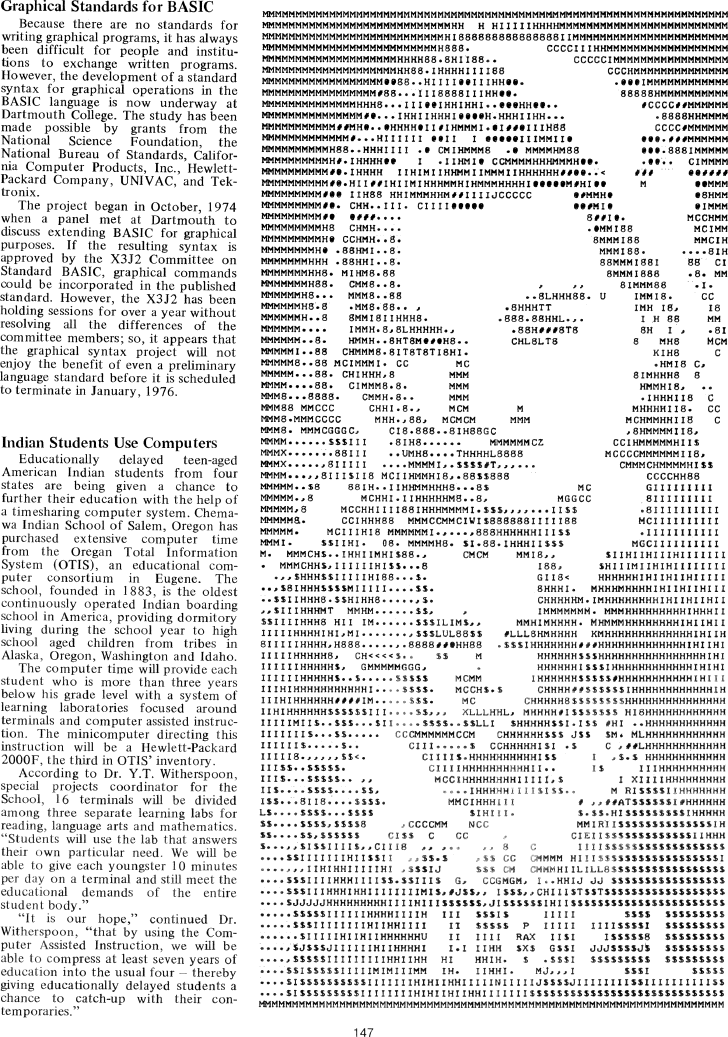The Best of Creative Computing Volume 1 (published 1976)
Creative Computing Compendium (Standards for writing graphical programs in BASIC, American Indian Students Use Computers with Oregon Total Information System, Madonna and Child ASCII Art)

Graphical Standards for BASIC
Because there are no standards for writing graphical programs, it has always
been difficult for people and institutions to exchange written programs.
However, the development of a standard syntax for graphical operations in the
BASIC language is now underway at Dartmouth College. The study has been made
possible by grants from the National Science Foundation, the National Bureau of
Standards, California Computer Products, Inc., Hewlett-Packard Company, UNIVAC,
and Tektronix.
The project began in October, 1974 when a panel met at Dartmouth to discuss
extending BASIC for graphical purposes. If the resulting syntax is approved by
the X3J2 Committee on Standard BASIC, graphical commands could be incorporated
in the published standard. However, the X3J2 has been holding sessions for over
a year without resolving all the differences of the committee members; so, it
appears that the graphical syntax project will not enjoy the benefit of even a
preliminary language standard before it is scheduled to terminate in January,
1976.
***
Indian Students Use Computers
Educationally delayed teen-aged American Indian students from four states are
being given a chance to further their education with the help of a timesharing
computer system. Chemawa Indian School of Salem, Oregon has purchased extensive
computer time from the Oregon Total Information System (OTIS), an educational
computer consortium in Eugene. The school, founded in 1883, is the oldest
continuously operated Indian boarding school in America, providing dormitory
living during the school year to high school aged children from tribes in
Alaska, Oregon, Washington and Idaho.
The computer time will provide each student who is more than three years below
his grade level with a system of learning laboratories focused around terminals
and computer assisted instruction. The minicomputer directing this instruction
will be a Hewlett-Packard 2000F, the third in OTIS' inventory.
According to Dr. Y.T. Witherspoon, special projects coordinator for the School,
16 terminals will be divided among three separate learning labs for reading,
language arts and mathematics. "Students will use the lab that answers their own
particular need. We will be able to give each youngster 10 minutes per day on a
terminal and still meet the educational demands of the entire student body."
"It is our hope," continued Dr. Witherspoon, "that by using the Computer
Assisted Instruction, we will be able to compress at least seven years of
education into the usual four - thereby giving educationally delayed students a
chance to catch-up with their contemporaries."


